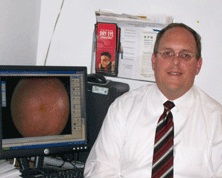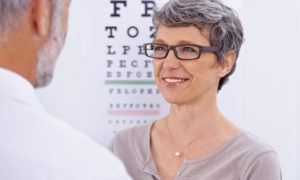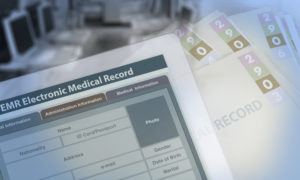By Eric Botts, OD
Learn easy billing and coding tips to make dry eye treatment a profitable part of your practice. 
How often do you hear patients complain about the following: “My eyes are dry,” “My eyes water all the time,” “My eyes feel like there is something gritty in them” or “My eyes are blurry when I read or work on the computer.” Patients with dry eye symptoms are prevalent in every optometric practice. In fact, according to the Dry Eye Workshop in 2007, prevalence of dry eye ranges from 5 percent to 30 percent in people aged 50 years and older.
Long-Term Patients
In many cases, dry eye syndrome (DES) is a chronic eye condition requiring more than the simple recommendation to use OTC artificial tears to relieve symptoms. Often first diagnosed during routine eye exams, DES may often be a chronic eye condition requiring ongoing treatment and frequent follow-up.
Typical DES treatment may include office visits, punctal plug insertion and tear osmolarity testing. Additional tests may include schirmer’s, corneal staining and tear break-up time, however, these are not separately billable procedures but instead included in the office visit.
Typical Treatment Plan–and How to Code for It
A typical patient scenario may look like this:
Initial office visit 99204/92004 for diagnosis and initiation of therapy and osmolarity test 83861
One-month follow-up office visit 99213 along with insertion of punctal plugs 68761
Two-week or one-month follow-up office visit 99213/99212 for punctal occlusion
IMPORTANT: 68761 has a 10-day global period so any visit or procedure associated with DES performed in the 10 days following initial punctal occlusion is included and not allowed to be billed separately.
Three- to six-month follow-up office visits 99213/99212 to monitor symptoms
A reminder that the following diagnosis codes support medical necessity for closure of the lacrimal punctum by plug 68761
370.00-370.07 Corneal ulcer
370.20-370.21 Superficial keratitis without conjunctivitis
370.23 Filamentary keratitis
370.33-370.35 Certain types of keratoconjunctivitis
371.42 Recurrent corneal erosion
375.15 Tear film insufficiency
710.2 Sicca syndrome
Establish Medical Necessity for Punctal Plugs
Also note that most insurance beneficiaries will reimburse for two separate punctum closures 68761 on any given day. As long as medical necessity is documented then closure of two additional punctum may be performed if necessary to alleviate symptoms. In addition to the original short-term collagen plugs, 90-day extend collagen plugs are also available. I use the Odyssey 90-day extend plug in place of the silicone plugs when I have issues with silicone plugs falling out or occasionally granulomas develop as a response to the insertion of silicone plugs and cause discomfort to the patient. I find many DES patients are also susceptible to seasonal episodes of more severe dry eye symptoms and use the 90-day extend plugs during the colder and dryer winter months to treat the discomfort associated with seasonal dryer climate conditions. For patients with year round dry eye symptoms the permanent silicone plugs are most beneficial and may stay in place for long periods of time.
ODs Best Equipped to Treat Dry Eye
Treatment of dry eye patients may vary depending on the severity of symptoms, but remember that DES is a condition affecting millions of people every day and optometrists are in the best position as primary care eye doctors to manage these patients.
Related ROB Articles
Effective Billing and Coding Can Generate Otherwise Lost Dollars
Enhance Dry Eye Treatment to Better Serve Patients
Four Key Steps toward Accurate Coding & Billing
Eric Botts, OD, is the founder and president of OBC Billing Specialists. To contact him: drvision@claimdoctor.net





















